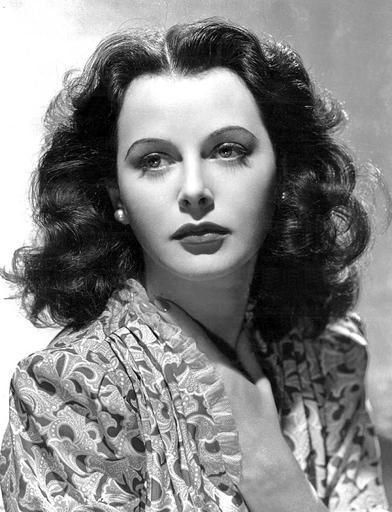
Early Life
Hedy Lamarr was born Hedwig Eva Maria Kiesler on November 9, 1914, in Vienna, Austria-Hungary. She grew up in a well-to-do family, with her father working as a successful bank director and her mother as a pianist. From a young age, Lamarr showed a keen interest in both acting and technology, foreshadowing her future career paths. Her acting career began at the remarkably young age of 17 when she starred in the Czech film “Ecstasy” (1933), which became notorious for its nude scenes. In the same year, at just 18 years old, she married Friedrich Mandl, an Austrian military arms merchant. However, the marriage was oppressive, and in 1937, Lamarr made a daring escape by disguising herself as a maid and fleeing to London.
Hollywood Career
In London, a chance meeting with MGM studio head Louis B. Mayer led to a Hollywood contract and a new name: Hedy Lamarr. She made her Hollywood debut in “Algiers” (1938) opposite Charles Boyer, quickly earning the title “The Most Beautiful Woman in Films.” Lamarr’s Hollywood career spanned two decades, during which she starred in numerous notable films. These included “Lady of the Tropics” (1939), “Boom Town” (1940) with Clark Gable and Spencer Tracy, “Ziegfeld Girl” (1941) alongside Judy Garland, “White Cargo” (1942), and “Tortilla Flat” (1942). Her most successful film, “Samson and Delilah,” was released in 1949. However, as the 1950s progressed, her career began to decline, culminating in her final film appearance in “The Female Animal” (1958).
Inventions
Beyond her silver screen success, Lamarr harbored a brilliant, inventive mind. During World War II, she collaborated with composer George Antheil to develop frequency-hopping spread spectrum technology. Their invention, patented in 1942 as a “Secret Communication System,” was designed to prevent Axis powers from intercepting Allied radio-controlled torpedoes. The system ingeniously used player piano technology to synchronize frequency changes between transmitter and receiver. Although initially dismissed by the U.S. Navy, the technology was adopted in the 1960s. Lamarr’s invention later became foundational for various modern technologies, including secure military communications, cell phones, Wi-Fi, Bluetooth, and GPS. Tragically, Lamarr received no compensation for her groundbreaking invention during her lifetime.
Legacy
Hedy Lamarr’s legacy extends far beyond her contributions to cinema and technology. She received the Electronic Frontier Foundation Pioneer Award in 1997 and was posthumously inducted into the National Inventors Hall of Fame in 2014. Her life story has inspired numerous books, documentaries, and films. In Germany, an annual “Invention Convention” day is named in her honor. Lamarr’s 101st birthday was celebrated with a Google Doodle in 2015. She is often cited as an example of a multi-talented individual who broke stereotypes, and is seen as a pioneer for women in STEM fields. Lamarr’s life continues to inspire discussions about the intersection of beauty, intelligence, and innovation.
Later Life
After retiring from the film industry in 1958, Lamarr’s life took several tumultuous turns. She published her autobiography, “Ecstasy and Me,” in 1966, though she later claimed it was ghostwritten and inaccurate. Throughout her life, Lamarr married and divorced six times. She faced legal troubles, including two arrests for shoplifting in 1966 and 1991, though the charges were eventually dropped. In her later years, Lamarr became increasingly reclusive. She engaged in a legal battle with Corel Corporation for using her image without permission, which was settled out of court. Hedy Lamarr passed away on January 19, 2000, in Casselberry, Florida, at the age of 85. In accordance with her last wishes, her ashes were scattered in Vienna’s Central Cemetery, bringing her remarkable life full circle in the city where it began.
